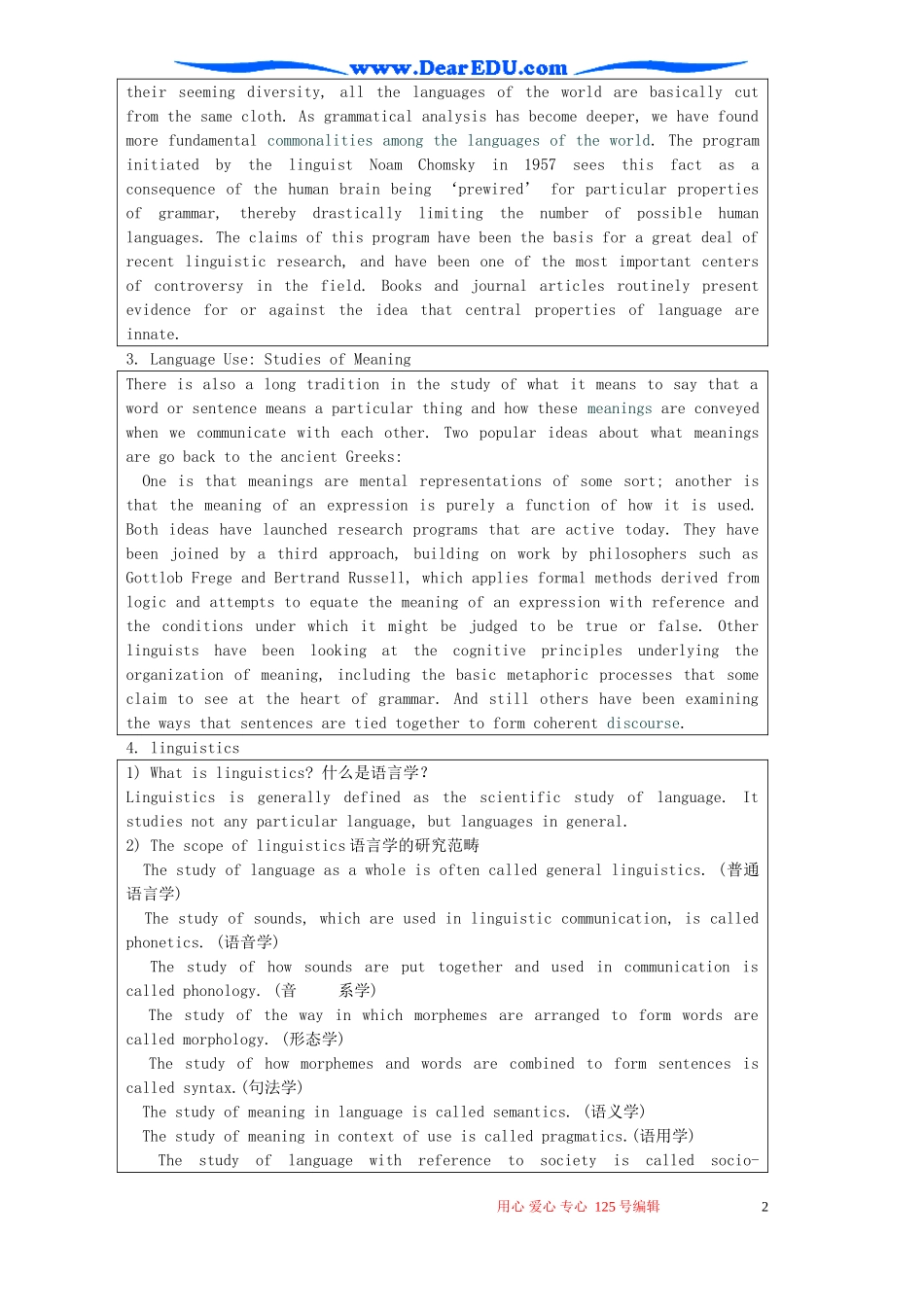Module4 Which English Background ReadingsPart Two Teaching Resources Section 1 Background Readings 1. Historical Linguistics The modern field of linguistics dates from the beginning of the 19th century. While ancient India and Greece had a remarkable grammatical tradition, throughout most of history linguistics had been the province of philosophy, rhetoric, and literary analysis to try to figure out how human language works. But in 1786, an amazing discovery was made: There are regular sound correspondences among many of the languages spoken in Europe, India, and Persia. For example, the English ‘f’ sound often corresponds to a ‘p’ sound in, among others, Latin and Sanskrit, an important ancient language of India: ENGLISH LATIN SANSKRIT father pater pitar full plenus purnas for per pari Scholars realized that these correspondences--found in thousands of words-- could not be due to chance or to mutual influence. The only reliable conclusion was that these languages are related to one another because they come from a common ancestor. Much of 19th century linguistics was devoted to working out the nature of this parent language, spoken about 6,000 years ago, as well as the changes by which ‘Proto-Indo-European’, as we now call it, developed into English, Russian, Hindi, and its other modern descendants. This program of historical linguistics continues today. Linguists have succeeded in grouping the 5,000 or so languages of the world into a number of language families sharing a common ancestor. 2. The Study of Language Structure At the beginning of the 20th century, attention shifted to the fact that not only language change, but language structure as well, is systematic and governed by regular ru...


